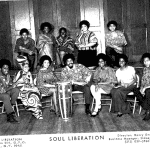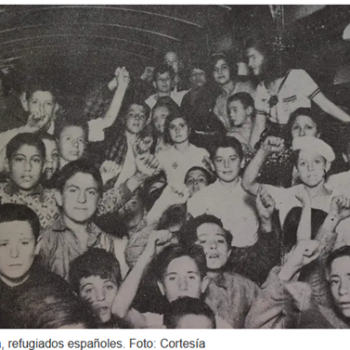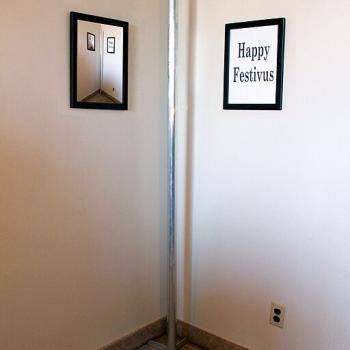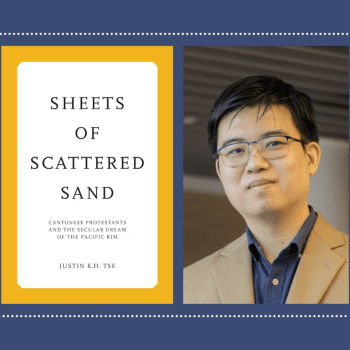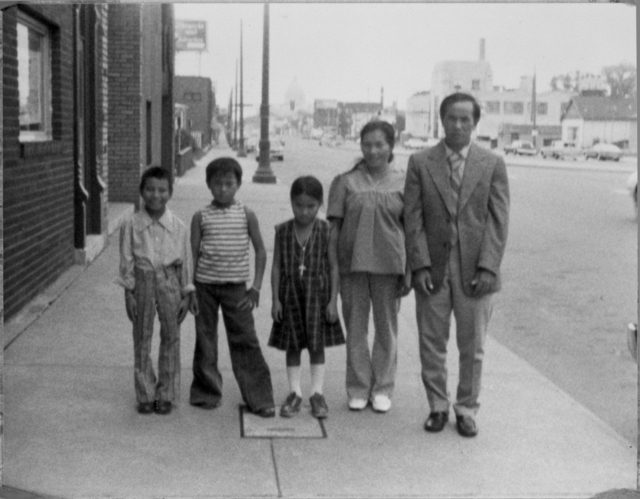
Imagine this scenario: a Person of Prominence who is a devout Christian is praying. This Person of Prominence is a community leader who provides important resources, forms of support, and opportunities that people need and want. There are other people, people who are also Christian, who gather with this Person of Prominence and pray with him, often in highly visible ways. And there are still other people who are present in the community and who do not identify with or practice Christianity. The official policy states that these other people are allowed to abstain from the prayer. You do not have to participate, they are told. You are free to do as you like. But these people still feel pressure to participate in the prayer. They are grateful for all of the help the Person of Prominence has given them, and they want to have a good relationship with him, especially since the resources he offers have a direct impact on their lives. They also want a good relationship with the other people who pray, since they affect their lives, too.
Yesterday the Supreme Court ruled, 6-3, that a former high school football coach, Joseph Kennedy, had the constitutional right to pray on the football field after a game. In the majority opinion, Justice Neil Gorsuch wrote that “Respect for religious expressions is indispensable to life in a free and diverse republic.” But three justices, including Justice Sonia Sotomayor, disagreed with the decision. Students are “particularly vulnerable and deserving of protection,” Sotomayor said, and they can find themselves in situations where they feel pressured to participate in religious activities. “Students look up to their teachers and coaches as role models and seek their approval,” she argued. “Students also depend on this approval for tangible benefits. Players recognize that gaining the coach’s approval may pay dividends small and large, from extra playing time to a stronger letter of recommendation to additional support in college athletic recruiting.”
In describing the opening scenario, I could be describing the Supreme Court case involving Joseph Kennedy. But I’m not. I’m actually describing a completely different situation, one that I’ve researched for the past twenty years and that I discuss at length in my forthcoming book. I’m talking about the experiences of non-Christian Southeast Asian refugees who were sponsored and resettled by Christian pastors, churches, and voluntary agencies in the United States.
The connections between high school football and refugee resettlement are not obvious, and, to be sure, there are significant differences between the situations I describe. Yet they both highlight some of the same fundamental challenges of living in a multireligious America: the problems of religious coercion and religious pressure, the question of whose religious freedoms matter most, and the fact that people often make decisions about participating in religious activities in the context of unequal relations of power.
Let me offer three lessons I’ve learned from my research about the issues of religious pressure and religious power, with attention to the specific context of American refugee resettlement, a system that involves a significant overlap of church and state. In the United States, refugee resettlement is a public-private undertaking, with religious institutions playing a vital role in the implementation of the government’s resettlement program. In the last quarter of the twentieth century, Christian voluntary agencies, often working in collaboration with local congregations that serve as “sponsors,” resettled a large share of Southeast Asian refugees—about 75% in 1981, roughly the highpoint of Southeast Asian refugee resettlement. Although some Southeast Asian refugees identified as Protestant or Catholic, this group of refugees included significant numbers of refugees who identified as Buddhist, ancestor-worshipers, and animists.
The first thing I know from my research is this: religious minorities can experience real pressure to conform to the religious beliefs and practices of people (namely, Christians) in power.
Sometimes this religious pressure very clearly falls under the category of coercion. Take, for example, the story of Mai Vang Thao, a Hmong woman who was sponsored by a Christian church when she was resettled in the United States. She described herself as committed to “traditional beliefs” and said that she “did not like Christianity” and “did not like to go to church.” But she went anyway. “When we arrived in this country, the Americans took us to church, so we went,” she said. She spent seven or eight years going to church, even though it was not her preference.
Other times the pressure was more subtle and indirect. Refugees sometimes experienced pressures for religious conformity due to the simple fact that they depended on Christian churches and individuals for essential resettlement assistance. For example, the Hmong American writer Mai Neng Moua explained that her family’s decision to convert to Christianity owed to the help they received from churches. “My family converted to Christianity when we came to Pittsburgh in 1981,” she said in her memoir. As she recounted, her mother was “a typical ‘rice-bowl’ Christian” for whom “the ‘rice’ came in the form of furniture and clothes, English as a Second Language classes for the adults, and Sunday school for the kids.” For Mai Neng Moua’s family, Christian conversion was a means of securing essential material and educational resources. For others, it was a means of achieving another important goal: social acceptance. Keith Vang, a Hmong man who was resettled in Michigan, explained his family’s decision to go to church in the simplest terms: “when we came, we wanted to fit in.”
These stories relate to a second lesson: people can experience pressure for religious conformity even when Christians in power make active and earnest efforts to accommodate religious difference and prevent religious coercion.
In the 1970s and 1980s, American Christians involved in refugee resettlement were aware that the incoming refugee groups were significantly different from those who had resettled in the United States earlier in the twentieth century—namely, they were predominantly not white, not European, and not Christian. To their credit, voluntary agencies like Lutheran Immigration and Refugee Service made genuine efforts to understand, show respect to, and make space for different religions. They helped connect Vietnamese Buddhist refugees with Buddhist monks, and in cultural orientation programs both overseas and in the United States, they explicitly told Southeast Asian refugees that they do not have to go to church or convert to Christianity in order to receive help. They also worked with local sponsoring congregations and provided them with educational pamphlets about Buddhist beliefs and guidelines for how to practice resettlement in a pluralistic way. In particular, they offered clear reminders not to proselytize. Ellen Erickson, director of the refugee resettlement programs at the Lutheran Social Service of Minnesota, the local affiliate of LIRS, emphasized this point in a 1993 interview with the Minneapolis Star Tribune. “What’s important is to offer the friendship and support,” she said. “…What you need to caution them [churches] is that there’s not a price tag on your help.”
Despite these genuine efforts to put ideals of religious pluralism into practice, Southeast Asian refugees still felt religious pressure. To begin, there were language barriers and communication difficulties. As one man recalled, refugees and their church sponsors were often communicating through “hand gestures” and “charade games”—not necessarily the best situation in which to have meaningful conversation about religious freedom concerns. Oversight was another challenge, and voluntary agencies could not always be sure that church sponsors kept to the guidelines of not proselytizing.
But there was also the simple fact that refugees prioritized their own survival and were sometimes unwilling to do things that might imperil their chances at securing resources that would ensure their family’s safe resettlement. For example, in 1986, the Minnesota State Refugee Advisory Council detailed the conditions of health care in the refugee camps in Thailand and discovered that Hmong refugees avoided being treated at the traditional medicine center (TMC) out of concern that resettlement workers would see them there. “The Hmong in the camp will not visit the shaman when located in the TMC for fear of ridicule and the suspicion that they may not be able to go [to] the US if they are seen visiting the shaman,” the report said. Put simply, even if they were told that practicing their own rituals was permitted, Hmong refugees did not necessarily trust that authorities were being truthful, and they were not willing to take any risks.
Finally, a third lesson: there are different types of power relationships at work, and they all can contribute to forms of religious coercion and religious pressure.
On one level, we must consider the unequal power relationship between individuals—for example, between a teenager who plays high school football and an adult who coaches the high school football team, or between a refugee who is being resettled and a Christian pastor who leads a congregation that has sponsored that refugee for resettlement. In my interviews, I found that Hmong refugees found it difficult to say no when a pastor or priest invited them to pray, to attend church, and to participate in other religious activities because that religious leader had offered important forms of help and assistance and were also a critical link to American society.
But there is also the unequal power relationship between Christianity and other non-Christian religions in America. Christianity, particularly Protestant Christianity, has historically enjoyed tremendous privilege in the United States, to the degree that Christian norms continue to shape what counts as religion in the first place. And, in a reflection of the power and privilege that Christianity holds, contemporary religious freedom conversations in the United States tend to focus on the needs of Christians—for example, the needs of the Christian football coach or the Christian church sponsor—rather than the needs of the non-Christian high school athlete and refugee.
It even matters if a group has a set of beliefs and practices that align more closely with a Protestant Christian template. In my research, I found that Christian sponsors offered a more informed and energetic commitment to meeting the needs of non-Christian people when those people had a set of beliefs, practices, and identities that were familiar, recognizably religious, and Christian-like. Vietnamese Buddhists, for example, had an institutionalized world religion and therefore received more forms of direct support and accommodation from their Christian sponsors compared to Hmong people, who identified themselves as animists, ancestor worshippers, and practitioners of shamanism and did not have a set of beliefs and practices that were as readily legible as religion. And, not surprisingly, Southeast Asian refugees who identified as Christian received the most forms of religious support overall.
I draw connections between these two very different situations—prayer at a high school football game and religious pressures experienced by Southeast Asian refugees—to make two basic points: that religious coercion and religious pressure are real and ongoing problems to address in a country that is characterized by both religious diversity and various intersecting forms of inequality, and that a meaningful consideration of religious freedom requires us to focus less on the needs of the Christian individual or institution that is in a position of power, and more on the needs of non-Christian individuals and groups that have less power.
To be honest, I am relatively optimistic when it comes to questions about Americans’ capacity to enact values of religious pluralism and religious freedom. I have found in my research that when people take time to listen to and learn from the groups who have historically been marginalized, they learn, and they do better.
Of course, that would require people in power—namely white Christian Americans—to want to listen to, learn from, and share space with non-white, non-Christian people. I see examples of such intentions all around me, and of good things arising from sincere efforts to put ideals of pluralism into practice. But the newspaper also regularly contains stories of exactly the opposite. As always, the type of America we choose to create remains contested.



